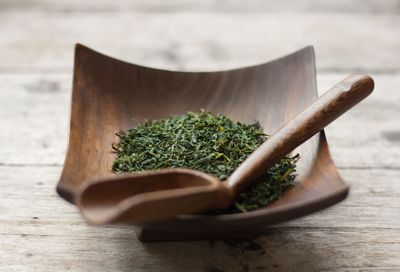Difference between revisions of "Sejak"
| Line 22: | Line 22: | ||
|title_mode=append | |title_mode=append | ||
|keywords=Sejak | |keywords=Sejak | ||
| − | |description=Sejak | + | |description=Sejak is a grade of green tea produced from the tender, soft, young buds that have been hand-picked after the mid-April rains, known in Korean as gogu and before early May's ipha which marks the beginning of summer in traditional East Asian culture. |
|image=http://teapedia.org/en/File:Woojeon.jpg | |image=http://teapedia.org/en/File:Woojeon.jpg | ||
|image_alt=Korean Woojeon tea | |image_alt=Korean Woojeon tea | ||
| Line 28: | Line 28: | ||
|og:site_name=Teapedia - The Tea Encyclopedia | |og:site_name=Teapedia - The Tea Encyclopedia | ||
|og:title=Sejak- Teapedia | |og:title=Sejak- Teapedia | ||
| − | |og:description=Sejak | + | |og:description=Sejak is a grade of green tea produced from the tender, soft, young buds that have been hand-picked after the mid-April rains, known in Korean as gogu and before early May's ipha which marks the beginning of summer in traditional East Asian culture. |
|og:image=http://teapedia.org/en/File:Woojeon.jpg | |og:image=http://teapedia.org/en/File:Woojeon.jpg | ||
|article:publisher=445826108840166 | |article:publisher=445826108840166 | ||
Revision as of 20:54, 12 May 2020
Sejak (세작, 細雀/ "Thin sparrow tongue"/second harvest pluck) or dumul-cha (두물차/second flush tea) or jakseol (작설/雀舌/"sparrow tongue") is a grade of green tea produced from the tender, soft, young buds that have been hand-picked after the mid-April rains, known in Korean as gogu (곡우/穀雨) and before early May's ipha (입하/立夏) which marks the beginning of summer in traditional East Asian culture.
Sejak tea can be produced from any green tea harvested within the periods between gogu and ipha. Sejak is the second pluck of green tea leaves after woojeon, which is the first pluck that takes place on or before gogu. Tea farms across Korea produce sejak tea including the farms on Jeju island, Hadong county, and Boseong county.
Sejak is a loose-leaf variety that undergoes both steaming and pan-firing which gives the tea a unique taste between the more vegetal steaming flavor palette and the nuttier roasted palette, though the flavor, scent, color, and flavor are often compared to Japanese Sencha. Sejak is usually steeped at around 60-70 degrees Celsius or 140-158 degrees Fahrenheit.
